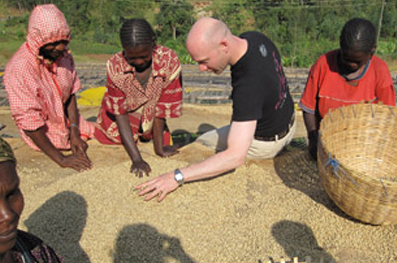Ethiopia
ETHIOPIA: THE CRADLE OF COFFEE
With a volume of nearly 300,000 tons of coffee per year, Ethiopia is one of the largest producers of Arabica in the world, after Brazil and Columbia. However, the country exports only half of its production, and consumes the other half locally.

Ethiopia also comes in second in the world in Organic exporting, after Mexico. Ethiopia, where Arabica comes from, offers a great variety of plants that are each particular to the region of production, which today form actual designations of origin on the market.
The word Mocha, which we associate with most coffee from this country, comes from the name of the city Moha (Yemen) through which coffee was exported for a long time.
Ethiopia is a big coffee drinking country. In the XVIIth century, people used to mix coffee with oils or animal fats (Bunakela). The population consumed this mixture with bread or with meat because it satisfied a person’s nutritional needs for the entire day! Coffee was also roasted and then ground and consumed, and in certain regions people grilled coffee leaves and used them to make infusions. Leaves can also be used for medical purposes.
From an economic standpoint, the Ethiopian countryside is one of the poorest in the world. Not counting several State plantations, 95% are small producers that own from 1.5 to 12 acres of land and use at least half of it to grow coffee.
Production systems are often based on coffee as a cash crop, around which farmers grow subsistence crops and fruit trees. Some operations take place on larger plots (up to 10 acres) and coffee is grown as a single shaded crop, associated with teff (typical Ethiopian grain).


